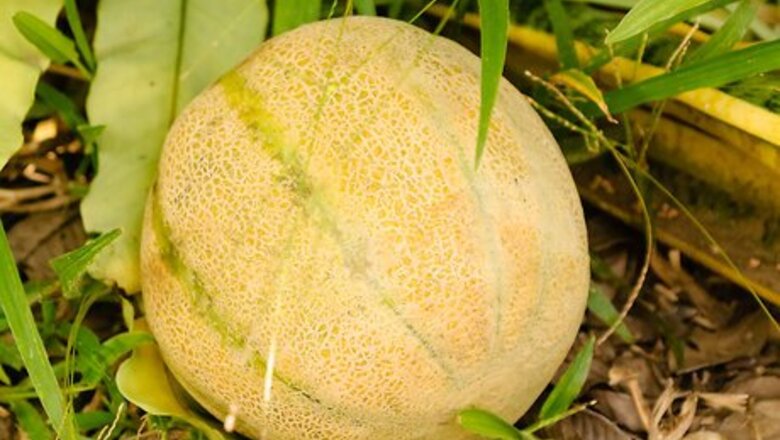
views
Ripening Cantaloupe On the Vine
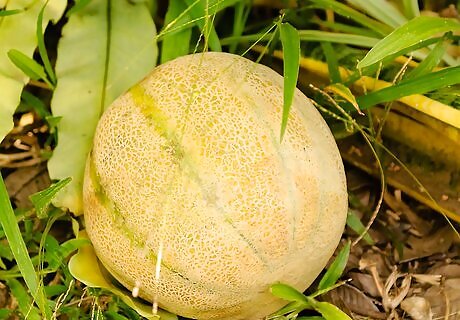
Check the cantaloupe once the color changes. Never harvest a cantaloupe when the outer rind is still green, since these melons are undoubtedly unripe. Once the cantaloupe changes to a tan or yellow color, though, it is probably ripe. Do not harvest the cantaloupe based solely on color, though. While a green cantaloupe is definitely unripe, a yellow or tan cantaloupe may not be quite ripe yet. Even if the melon is not quite ripe, however, noting the color will give you an idea of whether or not the fruit is close to being ripe. You must allow the cantaloupe to mature completely on the vine. Unlike other fruits, melons do not develop any sugars once they are harvested, so the cantaloupe will not become any sweeter after you remove it from the vine. The color and texture may change afterward, but the taste will not.
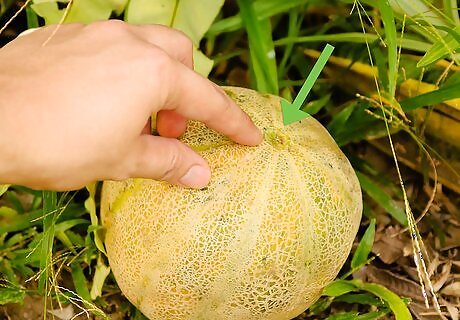
Look for a crack around the stem. The melon is usually ready to harvest when it is "full slip." This means that there will be a small crack that completely encircles the stem where it is attached to the cantaloupe. If you aren't sure whether or not the crack is deep or complete enough, test it by applying pressure to the side of the stem. Place your thumb directly next to the stem and apply pressure to the side of the stem. You should only need to use a little force, and the stem should begin to separate easily.
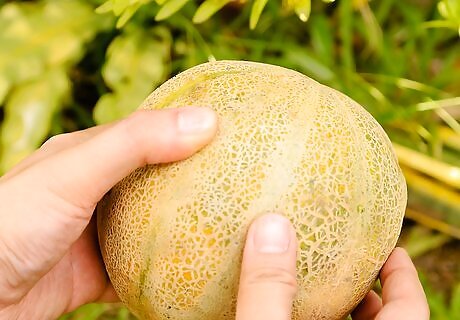
Harvest the cantaloupe. As soon as the color is right and the crack around the stem is complete, the cantaloupe is ripe. It should be harvested right away. Do not wait too long to harvest a ripe cantaloupe. If the melon falls off the vine on its own, it has likely become overripe, and both the taste and texture will be distorted as a result.
Ripening Cantaloupe Off the Vine
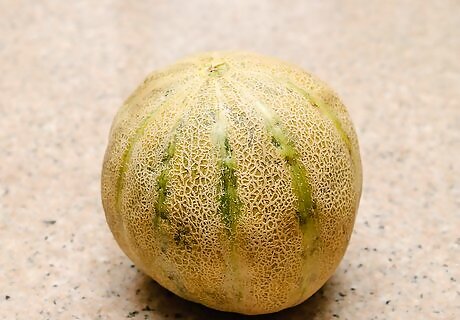
Know what to expect. As noted earlier, the taste of the cantaloupe will not change when you ripen it off the vine since its flesh does not contain starches capable of converting to sugars. The texture, color, and juiciness of the fruit can improve, though, so this process is still beneficial if you have a freshly harvested mature melon or one that is only slightly unripe.
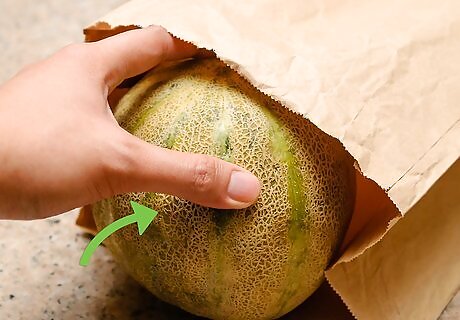
Place the melon in a brown paper bag. Use a brown paper bag that is large enough to fit the cantaloupe with a little extra room. The fruit should not be squeezed into the bag too tightly. Ideally, you should leave a little room for airflow inside the bag. Make sure that you close the top of the bag when you are ready to let the melon begin ripening. The closed paper bag traps the ethylene gas produced by the cantaloupe as it ripens. The production of ethylene gas increases in the presence of additional ethylene gas, so keeping the gas concentrated within the space of the bag speeds up the ripening process. You need to use a paper bag instead of a plastic one. Paper bags are porous, so carbon dioxide can escape and oxygen can enter. Without at least this much airflow, the cantaloupe can begin to ferment.
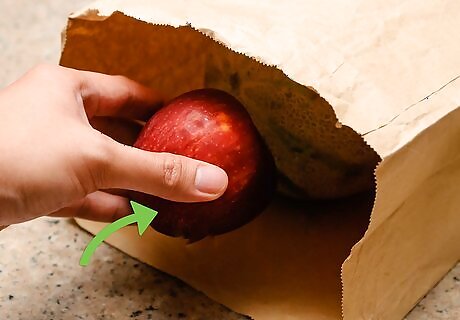
Consider placing a banana or apple in the bag. If you place a ripe banana or ripe apple in the bag, even more ethylene gas will be produced inside the space of the bag, and the ripening process will speed up even more. Bananas and apples produce notably high amounts of ethylene gas once they ripen, making them better options than most other fruits.
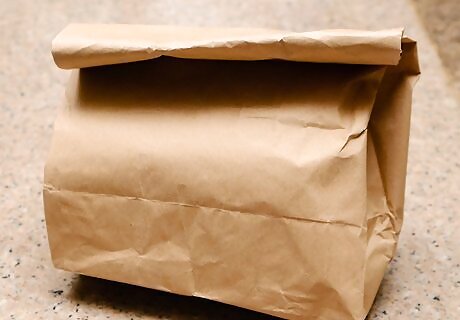
Leave the melon out at room temperature until ripe. Usually, the process will only take about two days, if not quicker. Make sure that the place you store the melon is neither excessively cold or excessively hot. You should also avoid areas that are heavy in moisture or particularly drafty. Check on the progress of the cantaloupe throughout the process to make sure that it has not ripened early.
Determining Ripeness
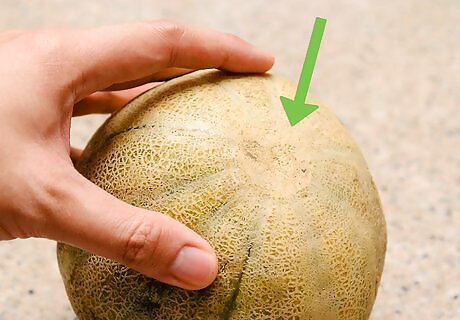
Check the stem end. If you purchased a cantaloupe instead of harvesting one from your own garden, first verify that no part of the actual stem is on the melon. If it is, you should give up on that cantaloupe now, since it suggests that the melon was harvested before it was able to fully mature on the vine. A cantaloupe like that will never ripen. Also check the rind around the stem end of the cantaloupe. If there are any tears in the rind, those could also suggest that the fruit was picked too early. Make sure that the stem end is slightly indented since this indicates that it was easily plucked off the vine. If the stem end protrudes, that could be another sign of a premature harvest. You should also avoid cantaloupe when the stem end has notably soft, moist spots around it. That could suggest that the fruit is actually over-ripe.
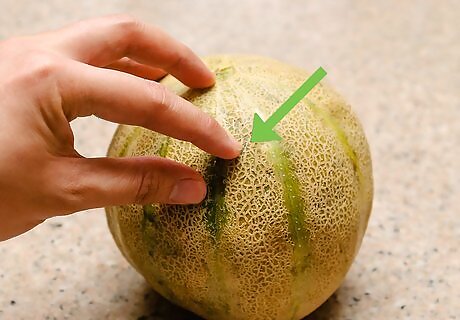
Look at the netting on the skin. The rind should be covered with a thick, coarse netting that appears well-defined over the entire surface of the melon. That netting can, however, stand out more easily on some areas than it does in others. Do not expect it to be perfectly uniform throughout.
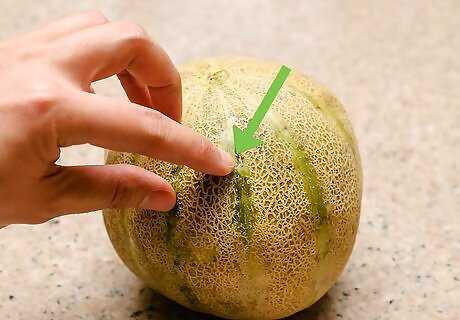
Note the color. If you did not harvest the fruit yourself and are growing it from a second party, check the color of the rind before you make a purchase. The rind should be tinted gold, yellow, or tan. A green-tinted rind indicates that the fruit is unripe.
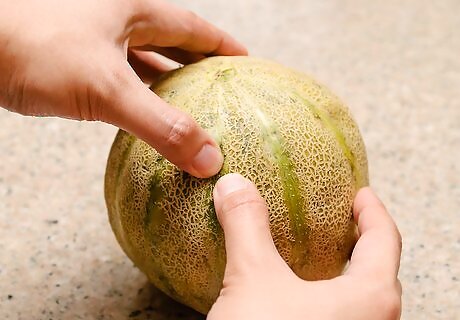
Use your sense of touch. Gently press on the blossom end of the cantaloupe. When you do, it should yield slightly. If it feels hard, you should allow the melon to ripen at room temperature for another day or so. On the other hand, if the cantaloupe yields too much or feels mushy, the fruit is likely over-ripe. Similarly, you should pick up the melon as you check it over, as well. When ripe, the cantaloupe will feel heavy for its size.
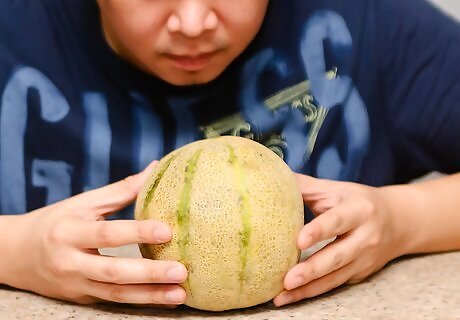
Sniff the cantaloupe. Take a whiff of the fruit at its blossom end, rather than at the stem end. The "button" of the fruit should be just below your nose as you inhale, and you should be able to sense the familiar fragrance of a ripe cantaloupe when you breathe in. If you cannot smell anything yet, try ripening the cantaloupe for another half a day or so. If you are unfamiliar with the smell of a cantaloupe, simply sniff for a notably sweet scent. The blossom end is where the softening begins and the aroma first develops, so the scent will be strongest and easily noticed there.
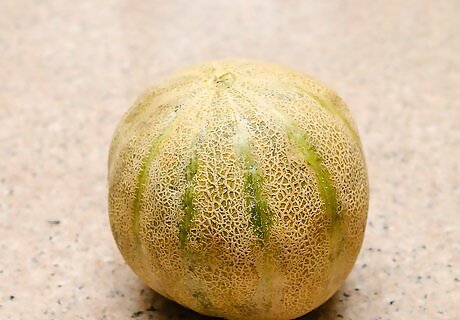
Finished.




















Comments
0 comment